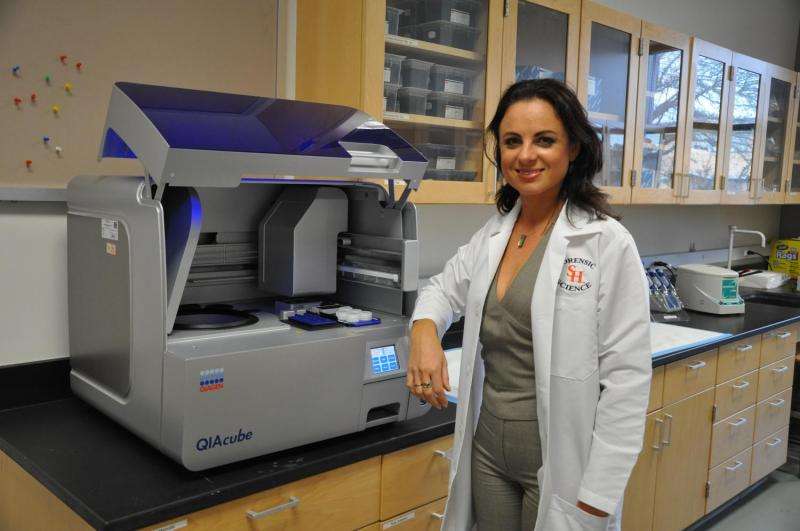Sheree Hughes-Stamm is an Assistant Professor and Director of the Graduate Program in the Department of Forensic Science at Sam Houston State University. Credit: Harriet McHale/SHSU
Sam Houston State University (SHSU) was awarded a grant from the National Institute of Justice (NIJ) to develop and test the best possible sample preparation methods for skeletal and decomposing human remains using emerging next generation DNA technology to help identify missing persons or victims of mass disasters.
Sheree Hughes-Stamm of SHSU's Department of Forensic Science and Bruce Budowle of the Institute of Applied Genetics (IAG) at the University of North Texas Health Science Center (UNTHSC) will investigate the best methods for extracting DNA from decomposed remains for next generation DNA sequencing. The new technology, called massively parallel sequencing (MPS), is the most advanced tool in the field of Forensic Biology and can provide more information from each DNA sample, including identification and ancestry.
"Massively parallel sequencing provides deeper mining of DNA and may provide more information in missing persons or mass disaster cases when an identification using conventional methods fails," said Hughes-Stamm. "The study will focus on identifying the most efficient sample preparation methods that maximize DNA quality and quantity for sequencing and developing the most effective data interpretation strategies for the vast amount of data obtaining from the MPS forensic identify panels in order to improve our ability to resolve more missing person cases."
Currently, DNA identification of human remains is performed using reference samples from close family members or direct comparison with personal items used by the victim. However, relatives may not be found, and individual DNA samples may be unreliable.
The new MPS systems allow more and smaller DNA markers to be analyzed in each sample from badly degraded samples, thus increasing the possibility of success in identifying the deceased. Because MPS represents a fundamental shift in chemistry when identifying human remains, new procedures may be needed to retrieve sufficiently pure DNA prior to sequencing.
The study, which will be conducted over a two-year period, will use cadavers from the Southeast Texas Applied Forensic Science Facility, one of only six body farms in the country, to test the best DNA extraction methods to maximize the use of MPS technology. Currently, there are two different MPS platform marketed for forensic applications, and SHSU and UNTHSC each have at least one of the machines, allowing both to be analyzed simultaneously. In addition, the UNTHSC processes the majority of missing person identifications not only for the state of Texas, but also for the entire United States.
Testing of the new technology will start by first using the current DNA testing methods with challenging biological samples to see how the results will then compare when the two MPS platforms are used, Hughes-Stamm said.
The latest NIJ grant follows on the heels of another study conducted for the agency at Sam Houston State University, which examined new techniques to preserve tissue samples and speed up the identification process following mass disasters, such as hurricanes, tsunamis, terrorist attacks, wars, or acts of genocide.
Provided by Sam Houston State University





















